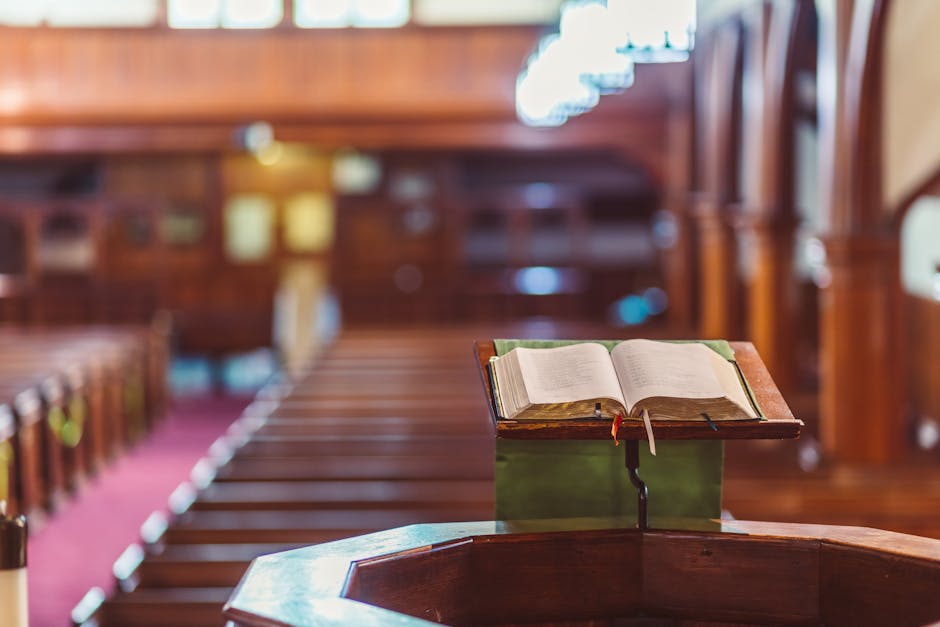As Catholics, understanding the roots of our faith and the foundation of the Church is essential to deepen our relationship with God and to appreciate the rich history that has shaped our beliefs. The question of who was the first pope leads us back to the apostolic times, to one of Jesus Christ’s closest disciples—St. Peter. This article delves into the life of St. Peter, his role as the first pope, and how the papacy began, providing a comprehensive look at the origins of the Catholic Church’s leadership.
Introduction to St. Peter
St. Peter, originally named Simon, was a fisherman from Bethsaida in Galilee. He was called by Jesus to be one of His first disciples, along with his brother Andrew. Peter is a central figure in the New Testament and is mentioned more than any other apostle. His journey from a humble fisherman to the leader of the early Church exemplifies the transformative power of faith.
The Calling of Peter
The Gospels recount how Jesus called Peter to be His disciple. In the Gospel of Matthew, Jesus encounters Peter and Andrew fishing and says to them:
“Follow me, and I will make you fishers of men.”
— Matthew 4:19
Peter immediately leaves his nets and follows Jesus, demonstrating his willingness to embrace a new life dedicated to God’s mission.
Peter’s Confession of Faith
A pivotal moment in understanding Peter’s role occurs in the region of Caesarea Philippi, where Jesus poses a critical question to His disciples:
“But who do you say that I am?”
— Matthew 16:15
Peter responds with conviction:
“You are the Christ, the Son of the living God.”
— Matthew 16:16
This declaration of faith sets the stage for Jesus to establish Peter’s future role in the Church.
The Foundation of the Papacy
After Peter’s confession, Jesus makes a profound statement:
“And I tell you, you are Peter, and on this rock I will build my Church, and the gates of Hades will not prevail against it. I will give you the keys of the kingdom of heaven…”
— Matthew 16:18-19
In this passage, Jesus renames Simon as Peter, which means “rock” in Greek (Petros). This symbolic act signifies the foundational role Peter will have in establishing the Church.
The Significance of the “Rock”
The metaphor of the rock is significant. It denotes stability, strength, and permanence. By calling Peter the rock upon which He will build His Church, Jesus appoints him as the leader and solid foundation for the faithful.
The Keys of the Kingdom
The keys symbolize authority and stewardship. In ancient times, keys were a sign of entrusted authority. By giving Peter the keys, Jesus entrusts him with guiding the Church and safeguarding its teachings.
Peter’s Role Among the Apostles
Throughout the New Testament, Peter emerges as the spokesperson for the apostles. He often takes the lead in interactions with Jesus and is present at significant events:
- The Transfiguration: Peter is one of the three disciples chosen to witness Jesus’ transfiguration on Mount Tabor (Matthew 17:1-9).
- Walking on Water: Peter’s attempt to walk on water towards Jesus (Matthew 14:28-31) illustrates his faith and human frailty.
- The Last Supper: Peter vows unwavering loyalty to Jesus, even though he later denies Him three times (Luke 22:33-34).
Peter’s Denial and Redemption
Peter’s denial of Jesus during the Passion is a poignant reminder of human weakness:
“Before the rooster crows today, you will deny three times that you know me.”
— Luke 22:61
After Jesus’ resurrection, He appears to Peter and the other disciples. In a tender moment of reconciliation, Jesus asks Peter three times if he loves Him:
“Simon son of John, do you love me?”
— John 21:17
Each affirmative response from Peter is met with Jesus’ command to “feed my sheep,” reaffirming Peter’s role as shepherd of the Church.
The Early Church and Peter’s Leadership
After the Ascension of Jesus, Peter assumes a leadership role among the apostles:
- Pentecost Preaching: Peter delivers the first public sermon at Pentecost, leading to the conversion of about 3,000 people (Acts 2:14-41).
- Council of Jerusalem: He plays a crucial role in the Council of Jerusalem, addressing the inclusion of Gentiles in the Church (Acts 15).
Peter’s Missionary Work
Peter travels extensively to spread the Gospel:
- Lydda and Joppa: Performs miracles, including healing a paralyzed man and raising Tabitha from the dead (Acts 9:32-43).
- Caesarea: Baptizes the Roman centurion Cornelius, marking the first Gentile conversion (Acts 10).
Peter in Rome
Tradition holds that Peter eventually travels to Rome, the heart of the Roman Empire, to continue his missionary work. His presence in Rome is significant for several reasons:
- Establishing the Church in Rome: Peter’s leadership helps establish the Christian community in Rome, which becomes the central hub of the Catholic Church.
- Martyrdom: Peter is believed to have been martyred in Rome under Emperor Nero’s persecution around 64 AD. According to tradition, he was crucified upside down at his own request, feeling unworthy to die in the same manner as Jesus.
The Legacy of Peter’s Papacy
Peter’s role as the first bishop of Rome sets the precedent for the papacy. The unbroken line of succession from Peter to the current pope symbolizes the continuity and unity of the Church.
Apostolic Succession
The concept of apostolic succession is vital in Catholic theology. It holds that the authority given by Jesus to Peter and the apostles is passed down through their successors, the bishops, with the pope as the successor of Peter.
The Petrine Ministry
Pope Benedict XVI described the Petrine ministry as a service of unity:
“The Pope is not an absolute monarch whose thoughts and desires are law. On the contrary, the Pope’s ministry is a guarantee of obedience to Christ and to His Word.”
— Pope Benedict XVI
The Papacy’s Foundation in Scripture and Tradition
The role of Peter and the papacy is supported by both Scripture and Sacred Tradition.
Scriptural Foundations
- Binding and Loosing: Jesus tells Peter:”Whatever you bind on earth will be bound in heaven, and whatever you loose on earth will be loosed in heaven.”
— Matthew 16:19This grants Peter the authority to make decisions in matters of doctrine and discipline. - Shepherding the Flock: Jesus commissions Peter to care for His followers:”Feed my lambs… Tend my sheep… Feed my sheep.”
— John 21:15-17
Sacred Tradition
Early Church Fathers affirm Peter’s primacy:
- St. Irenaeus of Lyons: Recognizes the Church of Rome as founded by “the two most glorious apostles, Peter and Paul.”
- Tertullian: Refers to Peter as the “rock” of the Church.
- St. Augustine: Acknowledges Peter’s unique role among the apostles.
Events During Peter’s Papacy
While the exact duration of Peter’s papacy is debated, traditionally, it is considered to have lasted about 34 years. Key events during this time include:
Establishment of Church Structure
Peter and the apostles begin organizing the early Church’s hierarchy, setting the foundations for roles such as bishops, priests, and deacons.
Resolving Doctrinal Disputes
The early Church faced challenges regarding the integration of Gentile converts and adherence to Mosaic Law. Peter’s leadership at the Council of Jerusalem helps navigate these issues, promoting unity.
Persecution of Christians
Under Roman rule, Christians face increasing persecution. Peter provides guidance and encouragement to the faithful during these trials.
Peter’s Writings
Two epistles in the New Testament are attributed to Peter:
- First Peter (1 Peter): Offers encouragement to Christians facing persecution, emphasizing hope and steadfastness in faith.
- Second Peter (2 Peter): Warns against false teachers and underscores the importance of growing in knowledge of Christ.
The Symbolism of the Papal Office
The papacy embodies several symbols rooted in Peter’s legacy:
The Papal Keys
Representing the “keys of the kingdom” given to Peter, the crossed keys are a symbol of the pope’s authority to bind and loose.
The Fisherman’s Ring
Each pope wears the Fisherman’s Ring, engraved with St. Peter casting his net, signifying the pope’s role as a “fisher of men.”
The Papal Cross
A cross with three horizontal bars symbolizes the pope’s threefold role as bishop of Rome, head of the worldwide Church, and spiritual leader.
The Continuity of Peter’s Mission
Every pope, as the successor of Peter, continues his mission to shepherd the Church. This unbroken line is seen as a fulfillment of Jesus’ promise:
“And behold, I am with you always, to the end of the age.”
— Matthew 28:20
The Significance for Catholics Today
Understanding Peter’s role as the first pope enriches our appreciation of the papacy’s importance in guiding the Church. It underscores the continuity of faith and the transmission of apostolic authority through the ages.
Unity and Universality
The pope serves as a focal point of unity for Catholics worldwide, embodying the universal nature of the Church.
Teaching Authority
The papacy holds the Magisterium, the teaching authority of the Church, preserving doctrinal integrity and guiding the faithful.
Reflections from Church Leaders
Pope Francis on Peter’s Example
Pope Francis highlights Peter’s humanity and faith:
“Peter, a man of faith—imperfect and sinful but honest and open to the presence of Christ in his life—teaches us to trust in the Lord, despite our weaknesses.”
— Pope Francis
St. John Paul II on the Papacy
St. John Paul II emphasizes the papacy’s service to truth:
“The pope’s mission is to be the first servant of truth, to love it and to serve it with humility and strength.”
— St. John Paul II
Conclusion
St. Peter’s journey from a simple fisherman to the first pope is a testament to the transformative power of faith and the foundational role he plays in the Catholic Church. His leadership, teachings, and martyrdom set the stage for the papacy’s enduring presence as a guiding force for Catholics around the world.
As we reflect on Peter’s legacy, we are reminded of the importance of steadfast faith, humility, and dedication to Christ’s mission. The papacy, rooted in Peter’s appointment by Jesus, continues to be a source of unity and spiritual leadership, guiding the Church through the complexities of the modern world.
Let us, as Catholics, honor the legacy of St. Peter by embracing his example of faith and commitment, and by recognizing the papacy’s vital role in nurturing and preserving the teachings of Christ for generations to come.




